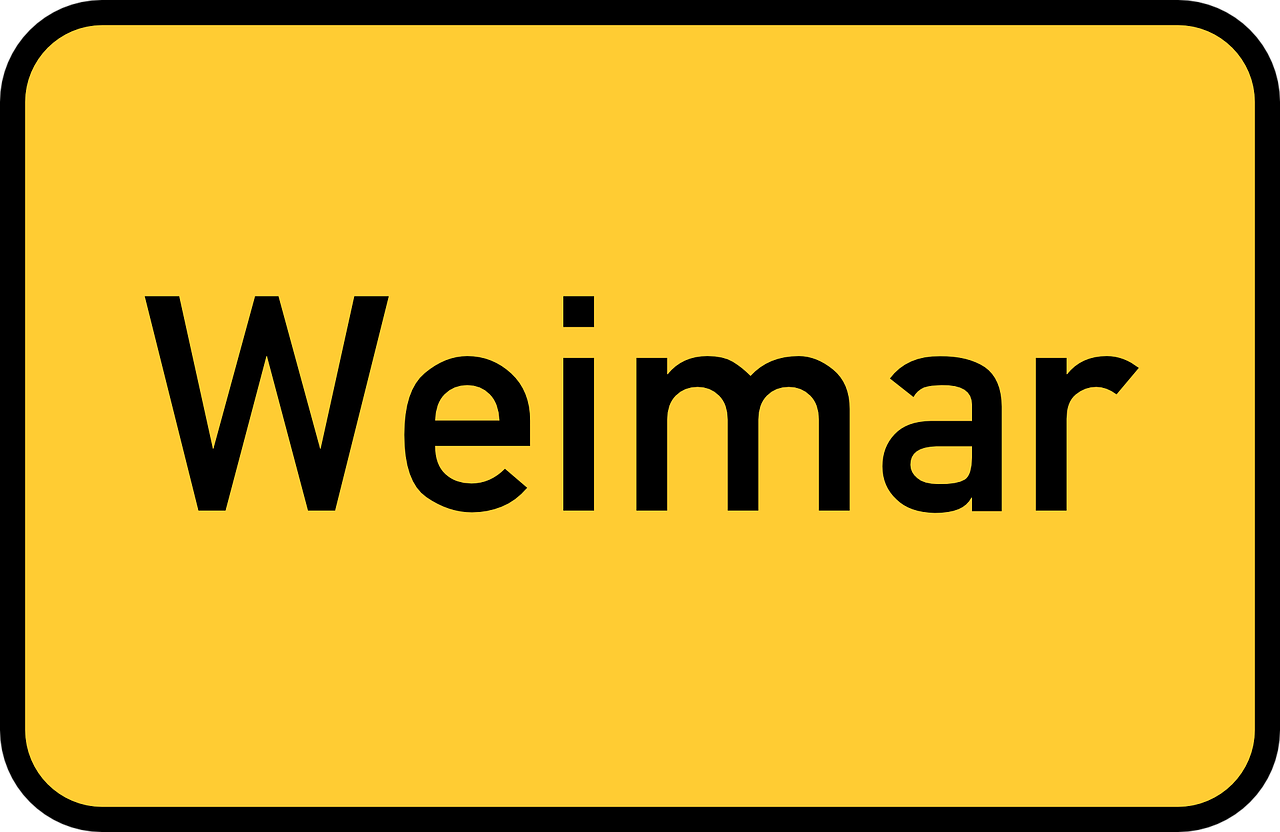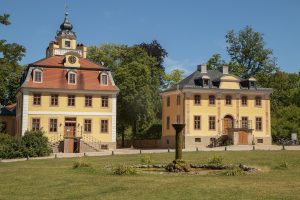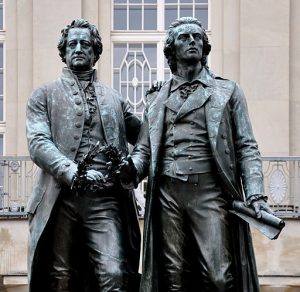Einheit 9.12 (online)

![]() Weimar – From Goethe and Schiller to Bauhaus. Sehen Sie das Video an und machen Sie Übung 1.
Weimar – From Goethe and Schiller to Bauhaus. Sehen Sie das Video an und machen Sie Übung 1.
![]() Übung 1
Übung 1
![]() UNESCO-Welterbe. Die UNESCO führt eine Liste von Kulturdenkmälern und Naturstätten, die besonders signifikant sind. Sie werden zu einem “Kulturerbe” oder zu einem “Naturerbe” erklärt und werden von internationalen Verträgen geschützt. In Deutschland gibt es 46 Welterbestätten (43 Kulturerbestätten und 3 Naturerbestätten).
UNESCO-Welterbe. Die UNESCO führt eine Liste von Kulturdenkmälern und Naturstätten, die besonders signifikant sind. Sie werden zu einem “Kulturerbe” oder zu einem “Naturerbe” erklärt und werden von internationalen Verträgen geschützt. In Deutschland gibt es 46 Welterbestätten (43 Kulturerbestätten und 3 Naturerbestätten).
Heute lernen Sie etwas über “Klassisches Weimar”.
 
|
|
Wo liegt das “Klassische Weimar” auf der Landkarte? Welterbe in Deutschland
Sehen Sie die Videos an.
Welterbe Klassikerstadt Weimar (Deutsche Welle) (0:59 Minuten; Deutsch)
Weimar – von Goethe bis Gropius (Deutsche Welle) (5:50 Minuten; Deutsch)
Weimar – From Goethe to Gropius (Deutsche Welle) (5:51 Minuten; Englisch)
![]() Weimar: von Goethe bis Gropius. Lesen Sie den Text und beantworten Sie die Fragen.
Weimar: von Goethe bis Gropius. Lesen Sie den Text und beantworten Sie die Fragen.
![]() Übung 2
Übung 2
![]() Grammatik
Grammatik
Future Tense
We have already used the verb werden as equivalent to the English verb “to become”:
Wenn ich groß bin, werde ich Pilotin. (When I’m grown up, I’ll become a pilot.)
Werden + infinitive is used to talk about the future:
Wirst du heute Abend zu Hause essen? (Will you eat at home tonight?)
Nein, ich werde in mein Lieblingsrestaurant gehen. (No, I will go to my favourite restaurant.)
When there is an adverb of time in a sentence and it is clear that future actions or events are indicated, German speakers usually just use the present tense:
Nächstes Jahr fahre ich nach Spanien. (Next year, I’m going to Spain.)
Morgen besucht Thomas seine Eltern. (Tomorrow, Thomas is going to visit his parents.)
The verb werden has to be conjugated and placed in the appropriate position in the sentence, while the infinitive goes to the end of the sentence:
Ich werde am Sonntag ins Restaurant gehen.
Am Sonntag werde ich ins Restaurant gehen.
In a dependent clause, it goes to the end of the dependent clause:
Ich weiß nicht, wann ich wieder in ein Restaurant gehen werde.
| singular | plural |
| ich werde | wir werden |
| du wirst | ihr werdet |
| er/sie/es wird | sie/Sie werden |
![]() Wortschatz in Quizlet:
Wortschatz in Quizlet:
Goethe Text
Weimar: von Goethe bis Gropius Text
![]() Was wissen Sie jetzt? Klicken Sie hier für Quiz 9.12.
Was wissen Sie jetzt? Klicken Sie hier für Quiz 9.12.
Media Attributions
- weimar-856079_1280 © Taken is licensed under a Public Domain license
- star © IO-Images is licensed under a Public Domain license
- 2020-07-31_Schlosspark_Belvedere_by_OlafKosinsky_MG_2752 © Olaf Kosinsky is licensed under a CC BY-SA (Attribution ShareAlike) license
- Weimar_Goethe-Schiller-Denkmal_2012_02 © Andreas Praefcke is licensed under a CC0 (Creative Commons Zero) license
- book © IO-Images is licensed under a Public Domain license
- link © IO-Images is licensed under a Public Domain license
- check mark © janjf93 adapted by Solomon Hajramezan is licensed under a Public Domain license
world heritage
sites
treaties
protected

